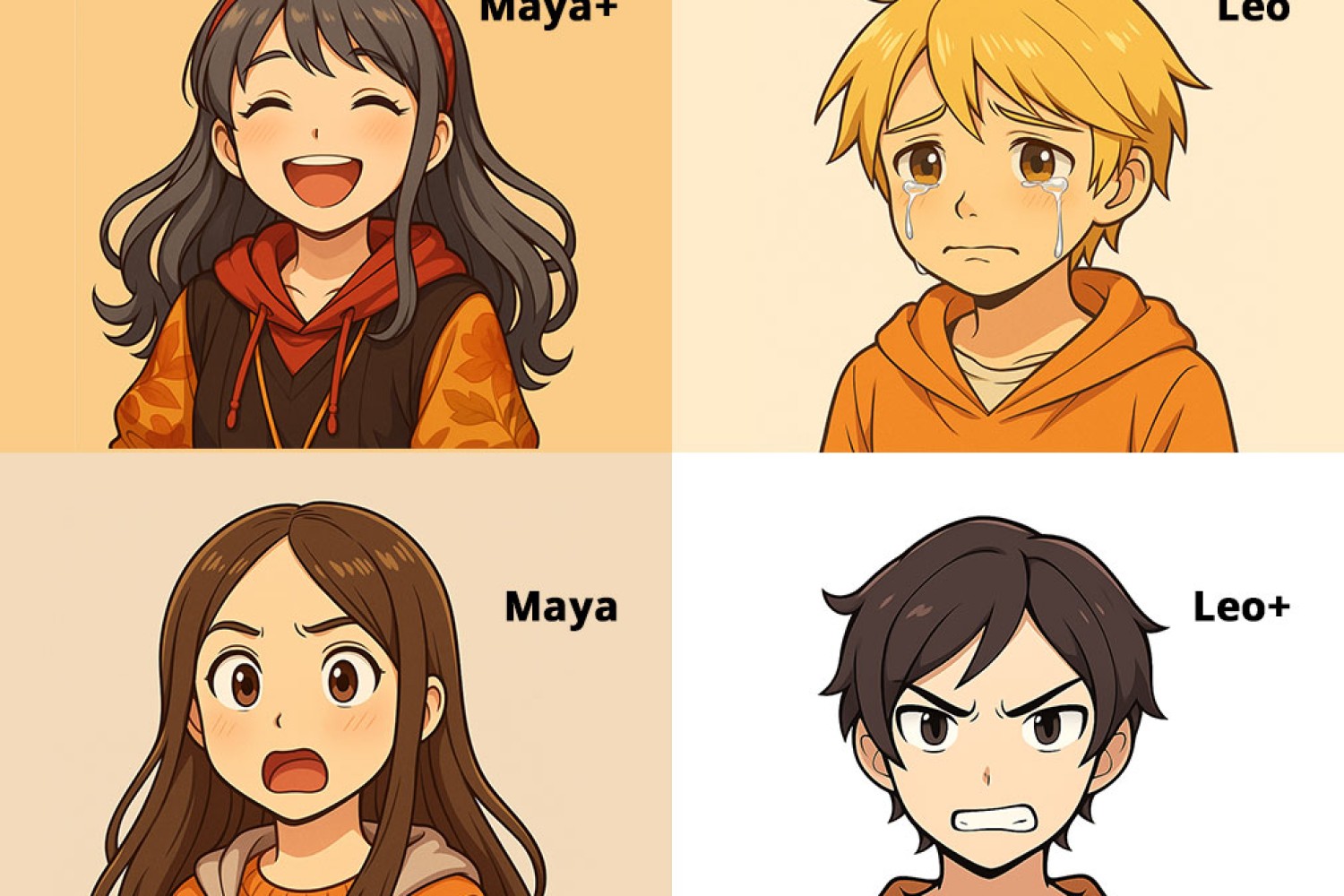🎭 Module 3: Emotions & Expression-Guess the Emotion!
How do young people learn to recognize and express the complex world of emotions? In the EMBRACE Future project, we turn emotional awareness into a hands-on, creative experience!
Module 3: Emotions & Expression, designed for all three age groups, helps young people explore how feelings can be communicated through movement and collaboration (often without saying a single word).
The Middle School Challenge: Statue of Emotion
In the middle school version of the module, the activity is an engaging challenge:
- Teams of Four: Learners work together, each taking on a specific role:
- The Sculptor: Secretly chooses a card with a core emotion (such as happiness, anger, fear, or surprise). They then subtly model the facial expression and posture of The Statue to represent that emotion, strictly without speaking.
- The Statue: Holds the pose given by the sculptor.
- The Observers (Two people): Take careful notes on all the ways the emotion is being expressed, from the tilt of the head to the tension in the hands.
- The Guessing Game: At the end, other teams try to identify the emotion expressed by The Statue. The observers’ detailed notes are then used to check the expression, highlighting the non-verbal cues that build emotional literacy.
This activity is inspired by Plutchik’s Wheel of Emotions, which we explored in detail in our previous blog post Feelings Have Layers: Exploring the Plutchik Wheel of Emotions. The wheel is a powerful tool for visualizing the eight core emotions and how they can vary in intensity and even blend (for example, Joy + Trust = Love).
Take the Challenge: Guess the Emotion!
We’re bringing this activity to you! The images below feature our middle school characters: Maya, Maya+, Leo, and Leo+, expressing core emotions from the module.
👉 Can you guess what emotions Maya, Maya+, Leo, and Leo+ are feeling in the photos?
Answer in our polls:
- LinkedIn:
- Facebook:
- Instagram:
- X:
The emotions expressed by the characters, in the order of the images, align with one of the options from our latest social media poll.
- Option 1: Happiness-Fear-Anger-Disgust
- Option 2: Joy-Sadness-Surprise-Anger
- Option 3: Boredom-Fear-Sadness-Disgust
- Option 4: Fear-Interest-Boredom-Trust
By exploring these fundamental emotions, young people build empathy and the skills for strong mental well-being.



